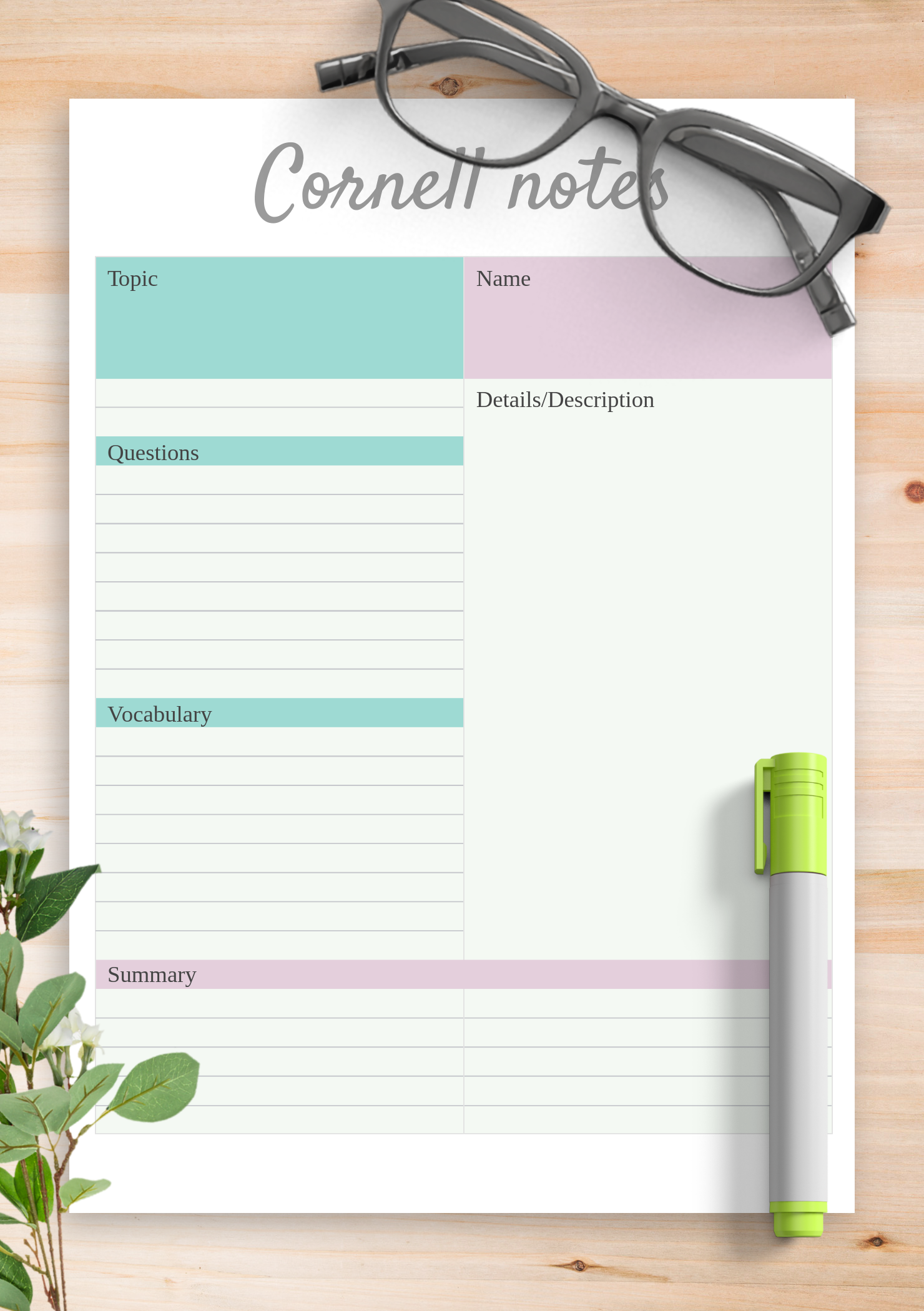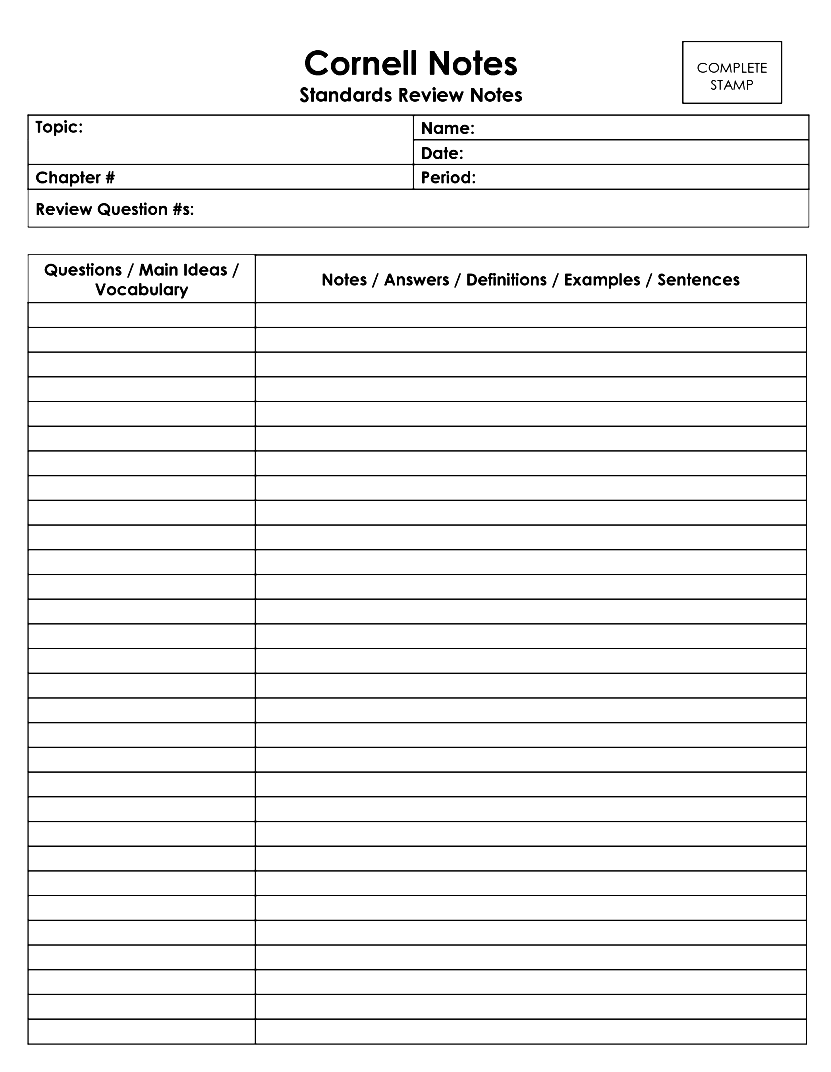
While this example illustrates the electronic use of this method, it is also acceptable, and sometime preferred, to have students complete their Cornell Notes by hand.
#Cornell notes how to#
This example of the Cornell Notes method was generated by a recent student of mine for a module in one of my courses that teaches students how to document organizational processes using different types of process maps/flowcharts. In this case, students use writing as a way to learn by taking notes on key concepts from the items they have been assigned to read or watch.įor your reference, please see the example below regarding the operationalization of this approach. It also helps them dig deeper and fully immerse themselves in the course content. This method appropriately puts the responsibility on the student to review assigned readings, videos, etc. It simply splits a regular size piece of paper into three separate sections where students take notes and summarize what they have been assigned to read or watch. This method helps students learn to effectively take notes. This approach is called Cornell Notes, and it is a simply yet effective method for students to review assigned materials and, in a sense, create their own study guides throughout a course. Because I utilize many approaches for actively engaging students in the learning process, both inside and outside the classroom, I have continuously been frustrated and puzzled about how to get student to prepare adequately for class sessions.Īn approach I recently discovered has helped me to change this in the courses I teach, and I want to briefly share it with you in the hope that it can help you too. when students do not come to class prepared.
:max_bytes(150000):strip_icc()/Untitled-design-2--5818bb8a3df78cc2e8a3eacb.jpg)

My experience is that many instructors struggle with how to conduct meaningful in-class discussions, activities, etc. in advance of class? If you answered yes to this question, you are not alone.

Do you ever find students do not review the assigned reading material, lectures, videos, etc.


 0 kommentar(er)
0 kommentar(er)
